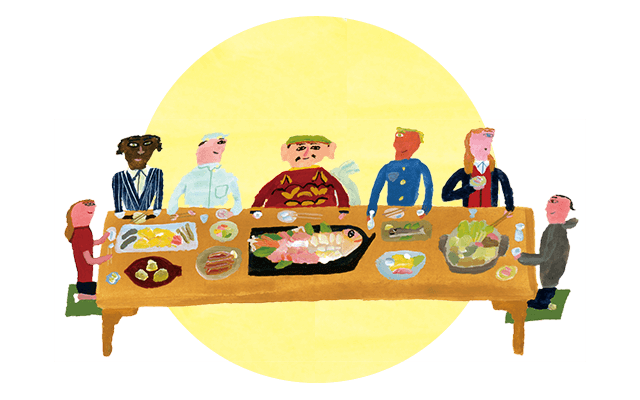
Harima Archives
2022.03.18 Rice Koji is Flower Koji?
は「糀」.jpeg)
Fresh Koji-making Continues in Harima
Because fermented rice koji resembles blossoming white flowers, sometimes it is written in Japanese, combining the kanji for “rice” and “flower.” For both miso and amazake, good quality koji is essential. At Komatuya, handmade miso, amazake, and koji-maker established in 1877, in Shirahama-cho, Himeji City in Harima, the fresh koji which is the basis for their miso, amazake, and shiokoji (salted koji)-making, is made by hand using a traditional method that employs steamers (wooden boxes) and sold for home users.
Old-fashioned Seiro Koji
Komatuya uses seiro koji to brew the koji for four days. The process starts by washing 180 kg of rice, soaking it overnight, and steaming it in a boiler. Once the rice has cooled down to a suitable temperature, the koji mold is quickly mixed in by hand, transferred to wooden boxes called toko, and laid to rest for about 12 hours. At night, the rice in the toko is stirred so that the rice on the outer sides and inner sides of the toko is mixed in a process called tokomomi, and the temperature of the rice becomes uniform. At the same time, this supplements enzymes to the koji mold and encourages fermentation. The steamed rice is placed on steaming baskets one by one on the third day. The baskets are shifted before lunch and spread out to adjust the temperature. The intuition to change the steamer baskets by looking at the quality of the rice, the ambient temperature, and the rice temperature is true artisanship. This process is continued throughout the night, and when the morning of the fourth day breaks, the koji is spread out in the steamer baskets like white flowers.
Making Amazake by Hand
The koji made in this way has many uses. One such benefit is making amazake. The freshly made koji is taken off the steamer baskets in a process called kogu, while the other ingredient for amazake, rice, is cooked. Once the rice is cooked, the rice and koji are placed alternately in a stirring machine, and the temperature for preparation is kept between 58–60 degrees Celsius. It is then moved to a tub wrapped in blankets to ferment for two more days. This is how hand-made amazake is completed.
Amazake for Festivals
In Shirahama-cho, Himeji City, an autumn festival known as the Nada Kenka Matsuri is held, and Komatuya reaches the height of its koji (rice koji) and amazake-making from around the end of summer. Amazake contains a lot of glucose and essential amino acids and Vitamins B1, B2, and B6. In the Edo period, it was taken as an energy drink. Therefore, in autumn festivals in Harima, every household used to make amazake and offer it to their household Shinto shrines and Buddhist altars and entertained guests. This custom remains today, and many families still buy koji to make amazake or buy amazake from brewers such as Komatuya.



